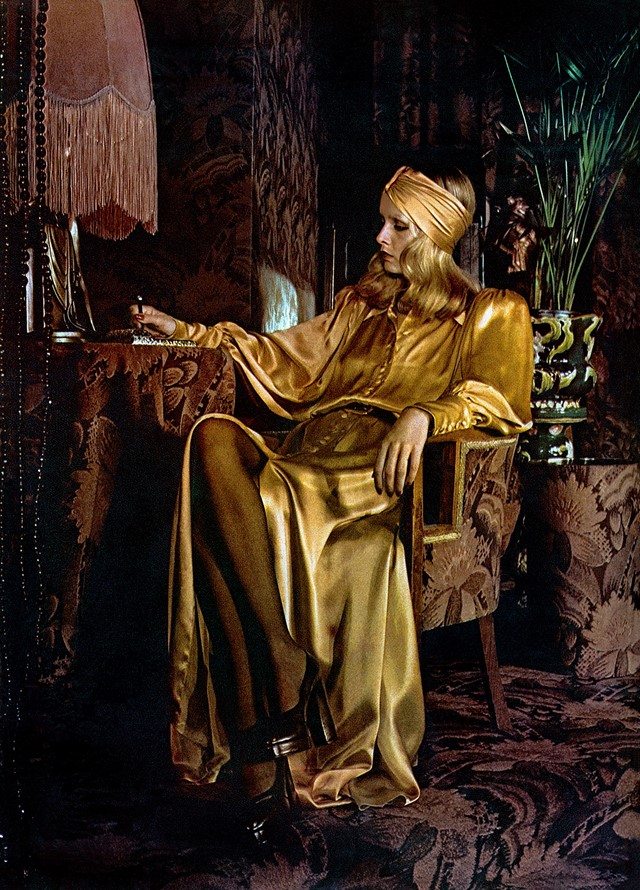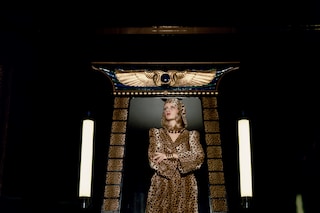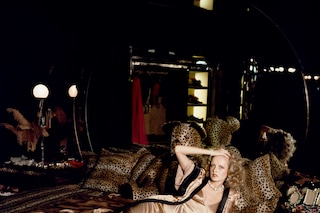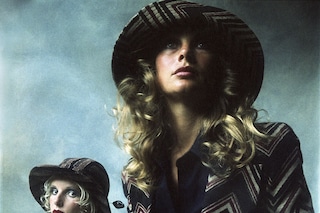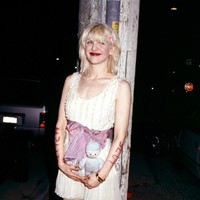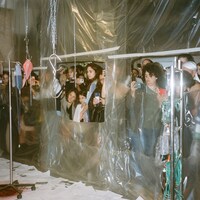As The Biba Story opens its doors at the Fashion and Textile Museum, Dazed meets founder Barbara Hulanicki to talk revolutionising retail, three-pound clothes, and establishing the concept store in the 1960s
In the Swinging 60s, one word defined teenage dreams: Biba.
The brainchild of Barbara Hulanicki and her husband, Stephen Fitz-Simon, Biba began as a postal boutique that dressed schoolgirls in Brigitte Bardot-inspired gingham. But by the 1970s, it had evolved into the world’s first lifestyle label – and the full Biba look came to life. With clothes, accessories, furniture, and food on offer, customers as diverse as Barbara Streisand, Princess Anne and David Bowie could live and breathe Biba.
This near-mythic tale is retold in the Fashion & Textile Museum’s latest retrospective, The Biba Story, 1964-1975. Featuring a leopard-print coat designed for Twiggy, clothing catalogues photographed by Helmut Newton, and dresses unearthed by Biba girls themselves, you’ll leave aching for a bygone era. But most fabulous of all was the seven-storey Art Deco building Biba occupied on Kensington High Street.
Groovy girls squeezed into barely-there skirts in communal changing rooms. Bored boys sipped cocktails among real-life flamingos in the rooftop garden. And everyone from the New York Dolls to Mick Jagger partied (if not, performed) at the 500-seater Rainbow Room restaurant.
“I was there very early on,” says Rosie Bartlett, Barbara’s longtime friend and first assistant in 1964. “It was a buzz. These girls heard about the shop and then it spread like wildfire. It was inexpensive clothes for you to touch and take away to the changing room.” Unlike Mary Quant, prices were well inside the average secretary’s income, so it’s no wonder everyone wanted a piece of the Biba pie.
Though it closed its doors due to financial crises in 1975, the emporium is just as enthralling today as it was 60 years ago. Case in point: an around-the-block queue had formed outside the Fashion & Textile Museum upon the exhibition’s opening. It couldn’t have come at a better time. Seeing the recent collapse of British department stores and e-tailers, remembering Biba is more important than ever.
“If the high street needs anything, it needs Biba,” curator Martin Pel explains. “People do [their] shopping online now and the high street is pretty much on its knees.” True enough, 21st-century retail starts with Instagram ads and TikTok hauls, and ends with impulse buys – a far cry from fun and flamboyant Biba. What was once a mainstay for 60s swingers is now a faraway fantasy for a chronically online generation waiting for an experience worth putting their phones down for.
Does the rocky retail landscape suggest the need for a refresh? “Yes, definitely,” says Hulanicki. And there’s no better place to start than Biba. As the 87-year-old Polish designer travels from Miami to London for the opening of The Biba Story, we speak to her about life post-WWII, nagging mothers, and how washing machines fuelled fast fashion.
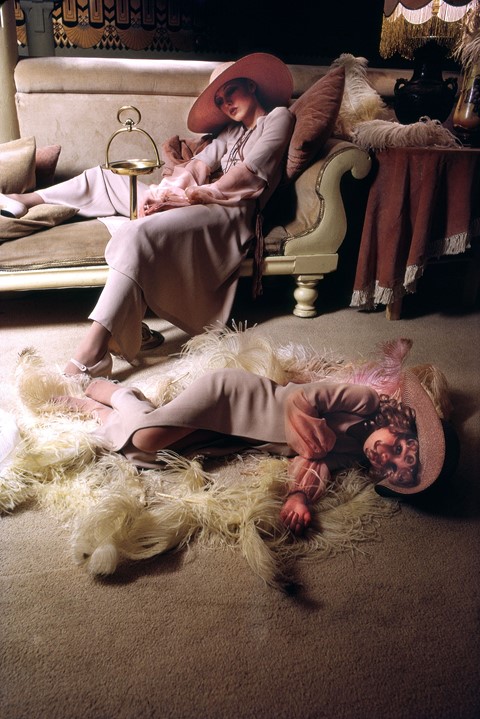
How did Biba evolve from a fashion brand to a lifestyle label?
Barbara Hulanicki: Your generation doesn't understand what it was like after the war. There was nothing. Whatever there was was horrible. And there was no food. We were on rations: one egg a week and four ounces of cheese. I mean, can you imagine? Nobody knew about fabulous food or anything like that, and that all kind of grew. There were a lot of fabulous things in France and Europe and slowly, people started to receive them in England. This is what we were doing.
How did young people approach shopping at the time?
Barbara Hulanicki: Oh, it's funny, it's almost like now. The girls knew how to type. All jobs had typing and then they left home. All the girls from the suburbs came to London to get away from their mothers nagging them. All they really wanted to do was go out in the evenings and go to clubs. Music was so important, you know, The Beatles were growing like mad. And see, they had enough money from typing. Guess what the money was? Ten pounds a week! My husband, Fitz, was in an advertising agency, and he said, “Three pounds a week goes on food. Three pounds a week goes on rent. And three pounds a week goes to Biba.” So we had to do clothes for three pounds because they wanted to buy every week, then dance and meet people.
And Biba was a place to meet people as well.
Barbara Hulanicki: Yeah, definitely. That was because of the comfort. We had sofas and seating for the boys. The lighting was dark, and there was music all the time. There was a great atmosphere.
Did you do that deliberately?
Barbara Hulanicki: You slowly do things like that. For instance, Fitz hated shops. So I said, “Okay, let's put a sofa in!” [laughs] In those days, the shop assistants wouldn’t let you touch the clothes. They showed them to you. You couldn't rummage around things. It was very formal.
“[The typical typing wage] was £10 a week! My husband, Fitz, was in an advertising agency, and he said, ‘Three pounds a week goes on food. Three pounds a week goes on rent. And three pounds a week goes to Biba’” – Barbara Hulanicki
So you made shopping more casual. How did Biba, even without a PR team, attract everyone, from royalty to rock stars, models to teenage girls?
Barbara Hulanicki: I’m telling you, this typing thing was almost like [the Internet] now, but slower. Word of mouth was incredible. And you only had to have one famous person come in. It had power.
It sounds like Biba was a sensory experience, which has become a rarity in the face of digitalisation. How does Biba compare to the shopping experience of the 21st century?
Barbara Hulanicki: Well, there isn’t one. There’s no shopping experience. They’re all closing. It’s really interesting what’s going to happen.
Recently, both physical and digital stores are shutting down. What do you make of that?
Barbara Hulanicki: That’s so frightening. I don’t know, but probably the same thing as last time. [...] When we first started in England, people took their interior furs to a stand to resell. There was a huge one on the high street. There were lots all over the world. Maybe that’s how it’s going to go.
In 1970, you said, “It isn’t just selling dresses, it’s a whole way of life.” How would you describe Biba’s way of life?
Barbara Hulanicki: Fun! [laughs] Fun in the sun.
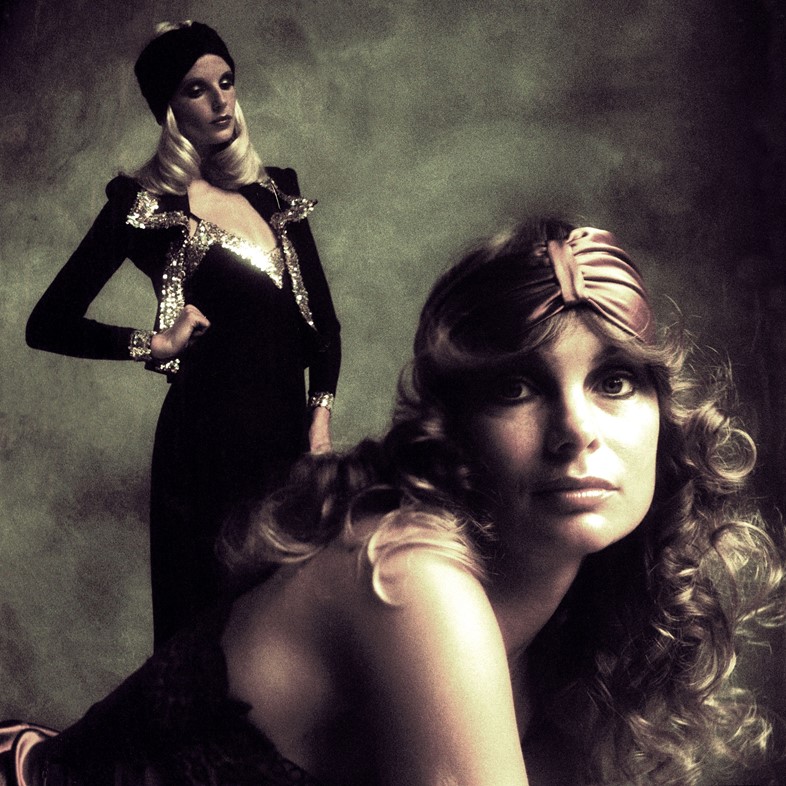
Do you consider Biba fast fashion?
Barbara Hulanicki: It was one of the first inexpensive brands, but we spent a lot of time pattern cutting and choosing fabrics. Also, the most important thing: I was on a plane with a guy from France. He was American and he was going to sell washeterias to England. I said, “What are you doing with this? It’s ridiculous.” Two or three years later, H&M and such started making special fabrics for washing machines. People just threw things – wool and everything – into a washing machine. It was absolutely killing the clothes, and that’s what started the disaster. All the dry cleaners disappeared, which was a form of luxury. So, all the fabrics were washable and they didn’t last. They didn’t look good. That’s why there are huge heaps of them all over the world. People just throw things out and buy another one.
Try as they might, no one has reached the heights of Biba. Why do you think that is?
Barbara Hulanicki: Because it’s usually run by a lot of men. [laughs] How do businessmen know what the feeling is? Or the colour?
How do you think Biba, if it was still on Kensington High Street, would fare today?
Barbara Hulanicki: Fantastic. Huge. But it would be very difficult to produce the products because you couldn’t produce them locally like we did. And once you start going into more inexpensive countries… That slavery there is really scary.
What do you hope younger generations will learn from The Biba Story?
Barbara Hulanicki: Start making your own clothes. When we started, there were patterns you could go and buy. There were seamstresses. And then you designed your own doodah.
What makes a Biba girl?
Barbara Hulanicki: Freedom. Moving on, too. It’s a woman’s world now, which is hope.
The Biba Story, 1964-1975 runs at the Fashion & Textile Museum until 8 September.
